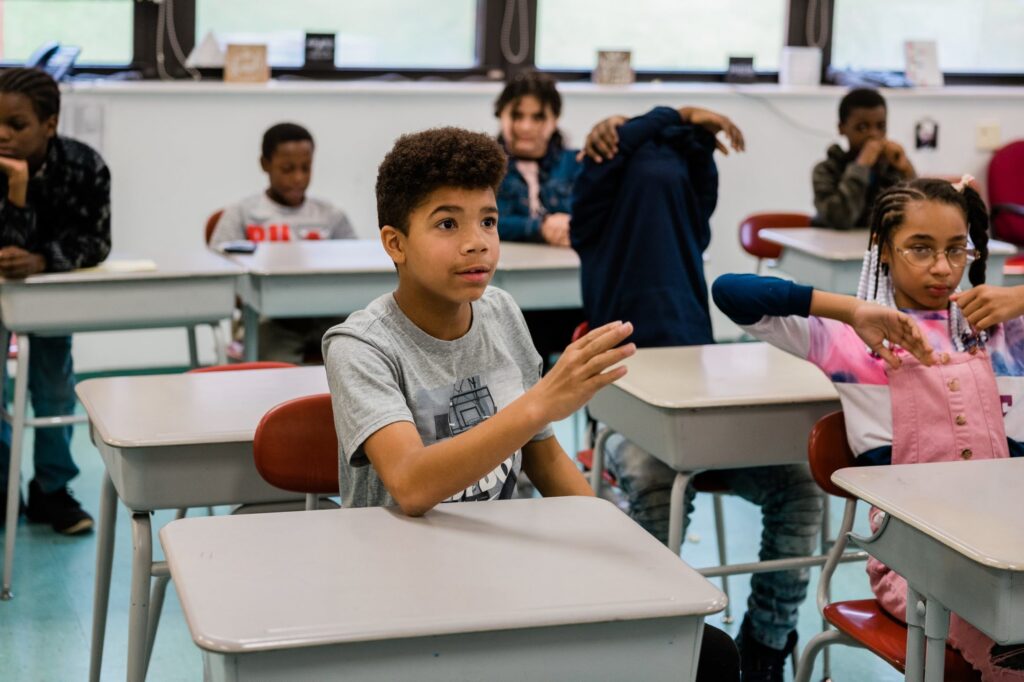Students from other countries experience a bevy of challenges as they embark on their journey in a new place. As school leaders, teachers, and passionate thinkers, we are uniquely positioned to reimagine how schools approach learning environments for students enrolled in English language development (ELD) programs.
To start, ask yourself the following question: Are English learners in our school ‘accessing’ the same learning opportunities as their native English-speaking peers? If your answer is ‘no’ or ‘not as well as we would like’, then you are not alone. Let’s consider what can be done to rebond students with diverse linguistic needs to their most familiar place in America—their neighborhood school.
Take this example of Moises, an astute young learner who has great capacity, but isn’t getting the access to the supports he needs:
Let’s unpack what Moises’ capabilities are. He can solve multi-step problems despite a language barrier, and he can validate the importance of his learning to his teacher, even in his second language! However, he still lacks the academic language skills in English needed to fully engage in, and have access to, rigorous content. This happens all too often; English learners who have conversational proficiency levels are thought to be academically proficient.
Varying levels of language proficiency, along with varying educational experiences in their first language, contribute to students’ overall academic success, as do different cultural perspectives on education. We must be transparent about these differences in order to open the lines of communication needed to implement best practices for our English learner population.
We need the same level of advocacy for our students that Moises has for himself. Many students in English language programs are exceptional learners, but how are we fostering their growth? Are all students included within the rigorous lesson activities? This is the key. If our English as a Second Language (ESL) teachers collaborate with our content area teachers to focus on the ‘language of the lesson’, the lesson becomes more accessible. In turn, educators are better able to diagnose student understanding, capacity, and even a need for enrichment and acceleration! This also gives a necessary, streamlined focus on this meaningful work. Packed schedules, itinerant travel, and a variety of other factors make finding collaboration time a tall order. But, this problem can be mitigated by focusing on lesson adjustments through language and content lenses.
In Westmoreland County, we’re using ESL content collaboration to support our rising English learner student population. Many of our districts are new to the rising demographics of students from other countries, and we wanted to ensure that English learners were given access to all facets of school. We’ve pledged to work with our schools to unlock this access through collaboration, meaningful engagement, and opportunities for students to work within challenging learning spaces. We identified STEAM as a high-interest, high-return discipline that can elicit expert roles among many students who speak English as a second language. One of our ESL teachers has piloted collaborative ‘robotics in ESL’ activities with rousing success. Students work together to solve problems and think critically, and they develop their English as they engage in discourse on the topics.
In addition, WIDA provides CAN DO Descriptors in order to support students and better help educators understand second language acquisition stages. But let’s take this as a first step toward a solution, not the solution itself. Let’s go beyond it to look at individual lessons, specifically how students can access content they are capable of mastering through language. Then, let’s take this newfound understanding and apply it to inclusion in extracurricular programs, gifted settings, and more, once we see what students “can do.”
